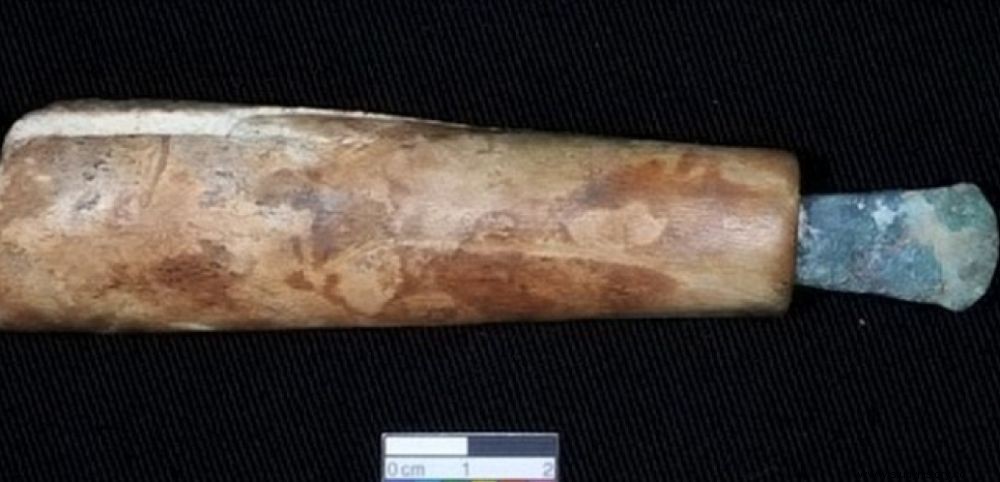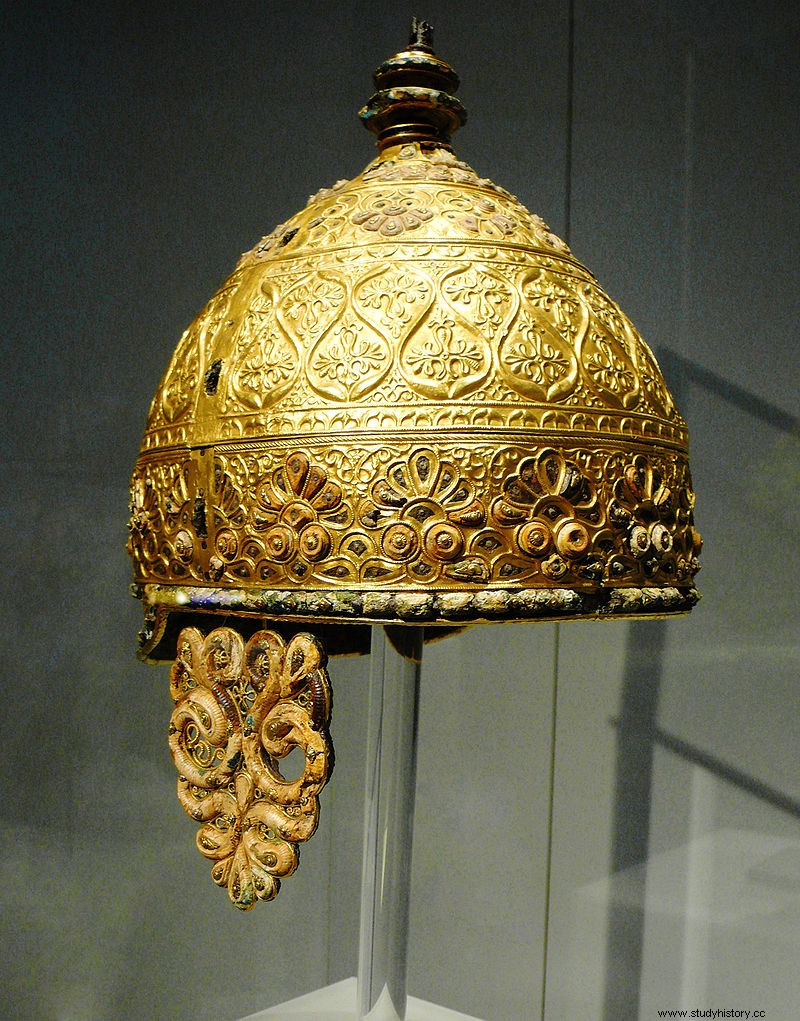 Ornate-handled copper chisel discovered among numerous objects near the cremated remains of an archer from the Bronze Age.
Ornate-handled copper chisel discovered among numerous objects near the cremated remains of an archer from the Bronze Age. TRACK. English archaeologists still can't believe it! A badger has unearthed a Bronze Age site at Netheravon, not far from Stonehenge, England. After neatly arranging the ceramic shards he had discovered while digging his burrow on the surface, the intrigued archaeologists only had to follow the mustelid's excavation trail! That's when they came across a 4,000-year-old cremation site. Among the numerous objects unearthed, appeared bronze tools, shards of pottery, a flint chisel with a decorated bone handle, an archer's wrist protection, all found near the cremated human remains of a warrior. For Richard Osgood, the head of the excavations, these discoveries are similar to those of the "Amesbury archer", exhumed near Stonehenge in 2002.

Badgers dig burrows and sometimes accidentally stumble upon archaeological sites. © Régis Cavignaux
One of the biggest concerns for archaeologists is the damage done by burrowing animals. Their natural tendency leading them to dig the loose earth, they upset the burials, move the remains where the claws are on them! Still, this isn't the first time their earthworks have unwittingly helped unearth archaeological treasures.
A fabulous treasure discovered in Charente

The Helmet of Agris, is a Gallic ceremonial helmet from the 4th century
BC, discovered in a badger burrow in Charente.
© Angoulême Museum of Fine Arts
In France, in 1981, CNRS researchers discovered the Agris helmet in the same way, one of the masterpieces of European Celtic art (4th century BC). While exploring the cave of Perrats, in Charente, north-east of Angoulême, they had seen fragments of gilded metal in the cone of rejection of a badger burrow... The excavations carried out during the following days had revealed the presence a skullcap, a crest and various elements from a ceremonial helmet whose refinement has always left you speechless. That of an iron hull armored with bronze leaves, decorated with scrolls and floral motifs. All completely covered in pure gold. In the cells of the interlacings, encrustations of red coral native to the Adriatic. Others from the Bay of Naples. Found dislocated - as is often the case in Celtic sanctuaries until the Gallic Wars (58 BC) - the golden helmet of Agris came to eclipse in all its splendour, from other smaller models. The badger, an animal to watch…!
